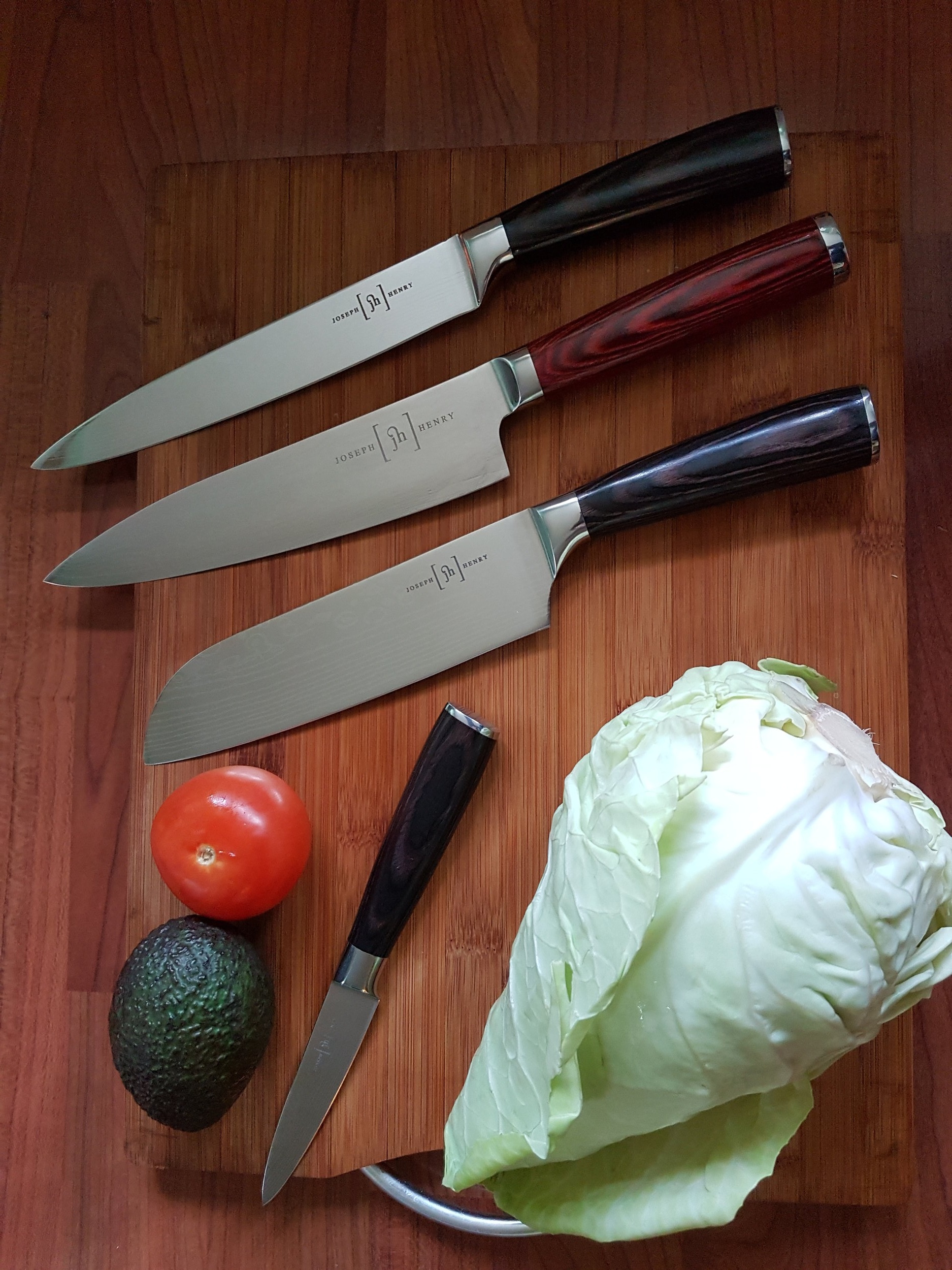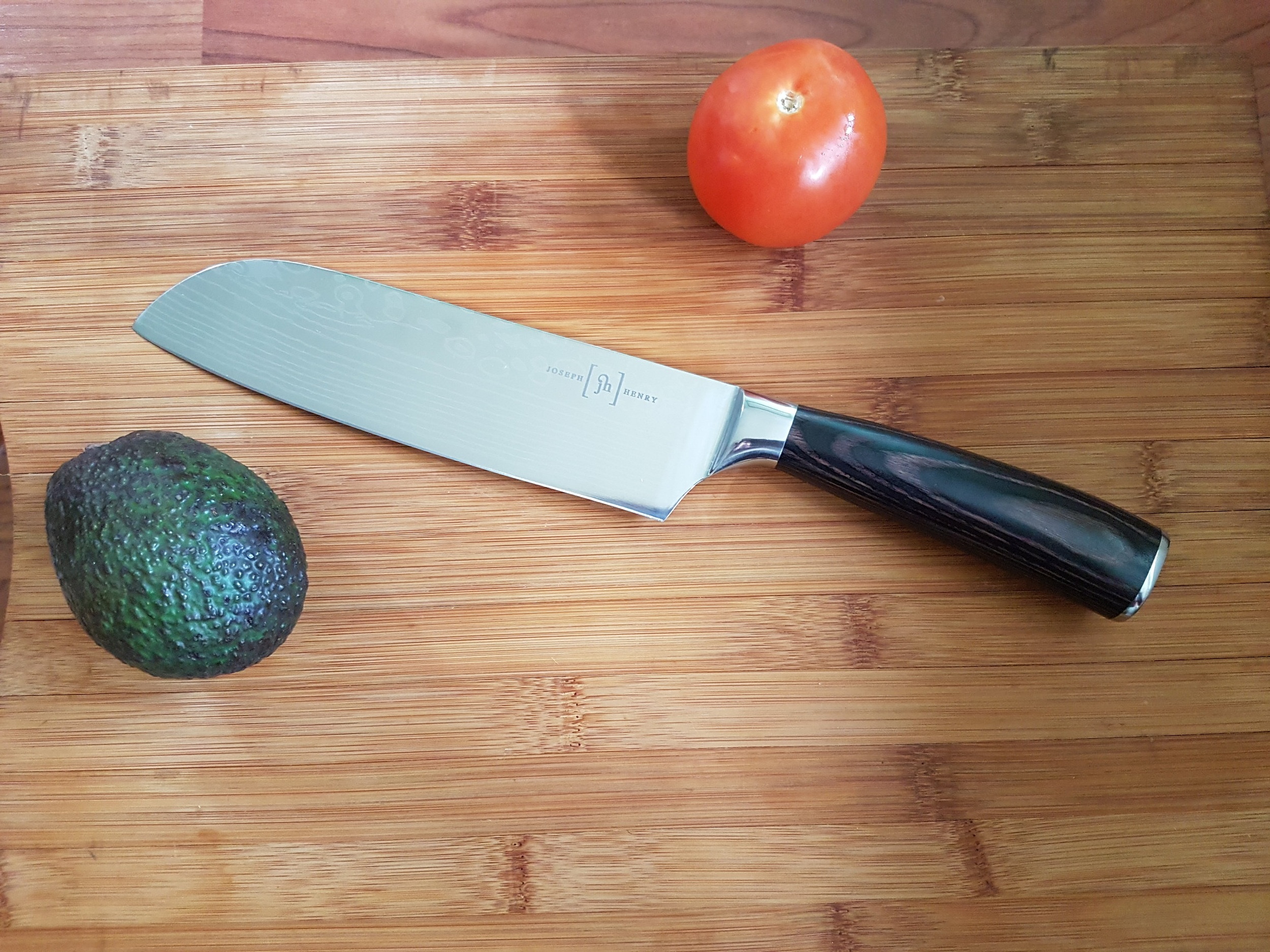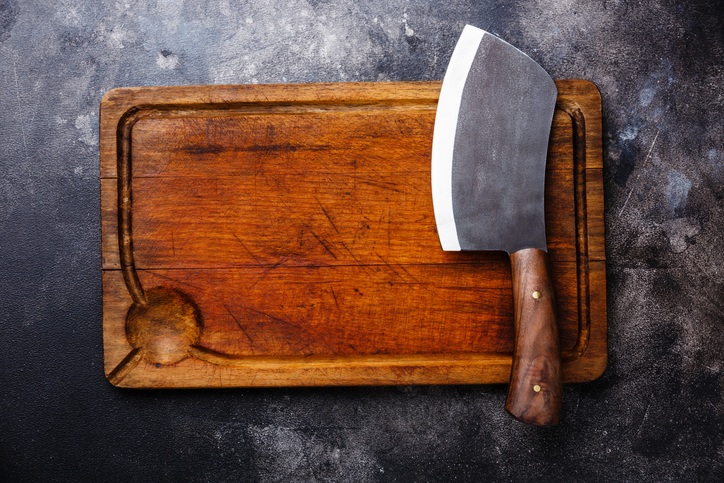Find out about which chef knife to use in your kitchen
“Japanese chefs believe our soul goes into our knives once we start using them. You wouldn’t put your soul in a dishwasher!”
Where to start with knife selection
For amateur chefs and foodies, understanding kitchen knives not only makes food prep and cooking more pleasurable, but it also makes you more dynamic and skillful in the kitchen.
In this post we look at the different types of kitchen knives and what they're used for, and make some recommendations on combinations of knives to start with, or perhaps just that one chef knife to treat yourself to.
The Chef Knife (or Gyuto)
The most essential knife to own for anyone who loves cooking, the Gyuto (or European Chef Knife) is a master at chopping, dicing, slicing and butchering. A broader stronger blade makes these the workhorse knife,
The Japanese chef knife, called a Gyuto, is usually lighter and thinner than a European chef knife. The European knife will often have a more curved shape, to allow for a more rocking rather than slicing cutting motion.
Typically both these knives would have a 7 or 8 inch blade.
The Paring Knife
A paring knife (or petite/petty knife) is perhaps one of the most versatile knives
in any kitchen and is used for tasks like chopping fruit and vegetables. The paring knife can be used for all sorts of kitchen tasks requiring the agility of a small knife, like slicing, peeling, filleting small fish and using its tip for places that are hard to reach.
The blade is often shorter, between 3 and 5 inches, reaching a delicate point.
The Carving knife
Thinner than a chef's knife, the carving knife is used to slice meat and poultry. It is especially designed to cut thin, uniform slices of meat. Typically a blade would be 8 inches or so in length.
The Santoku
The Santoku shaped blade is an alternative to the chef knife in use, having a flatter shape, and often a slightly thicker blade this knife is excellent for slicing, and light chopping. The gentle curve makes it well suited to chopping, dicing and mincing. Blade length is typically 5 to 8 inches.
The Small Santoku
Similar in design to its larger version, but more compact and delicate for lighter vegetable prep.
The Nakiri Bochu
Mid way between a chef knife and a cleaver, the Nakiri Bochu is designed to provide fatigue free vegetable slicing and preparation. Designed to complement the Santoku where a more delicate chopping action is required.
The Heavy Cleaver
The cleaver has a heavy rectangular blade that is used to 'cleave' meat and bone apart. It is the only knife that can cope with tough butchering tasks and is therefore a kitchen essential for cooks that go the whole hog! It is strongly recommended that you seek advice and training before using a heavy cleaver.
The Slicing Cleaver
Lighter than and slightly smaller, the slicing or preparation cleaver is almost considered a replacement to the chef knife in some oriental kitchens. Its wide blade and sharp angle of cut make it ideal for slicing and carving through larger vegetables, fish or chicken.
Caring for chef knives
It is not recommended to put any chef knife into the dishwasher. The first concern is hand safety, chef knifes (especially Joseph Henry ones) are ground to a very sharp bevel to make cutting and slicing easy to achieve. Careless placement into a dishwasher could easily result in a hand injury when reaching into the dishwasher. Secondly although the blade is usually a stainless steel, possibly layered as Damascus patterned, the salts in dishwasher agents can cause marking or blade spots.
Chef knives should be honed or sharpened before (and even after!) use. If the blade is regularly honed on a leather strop, sharpening will be much less frequent. Light sharpening to recover any edge, or damaged edge can be performed using a knife steel. Modern ceramic rod knife ‘steels’ provide a better sharpening experience and are less likely to score the blade edge. Only if the knife has received a chip or damage to the edge should there be any need for the blade to be aggressively reground.
did you know you can get left handed knives
Some specialist knifes, are ground with a flat side and a bevel side. making them either left or right handed. This is usually relevant to slicing and prep knives for professional kitchens. All Joseph Henry supplied knives are both handed, with a bevel on both sides of the blade. Also we typically recommend a 12.5 degree grind on the bevel, which produces an exceptionally fine edge and sharpness. When combined with the military grade stainless steel, or Damascus layers this provides a great edge and retention of sharpness.
starting your collection
As with all collections, it is likely to grow over time, however by far the best choice to start with would be an 8 inch Gyuto Chef knife, and then add to that a smaller paring knife. After that we would recommend either a Nakiri Bochu, or Santoku vegetable knife, or if you like to cook traditional roast meats a slender 8 inch carving knife.
choosing your knife
Knifes range tremendously in price and quality, whilst it is possible to get a complete set at the discount store, as with all things you get very much what you pay for. Joseph Henry Knives provide a chosen balance of quality and cost, aiming to provide many years of service, at a good value price.
Japanese style knifes should have a slightly blade heavy balance, this makes the chopping and slicing less tiring, based on a grip of holding the knife by the handle in a light but firm grip. European knives have the balance point at the bolster (where the blade and handle meet) this allows the knife to be used in a more pivoting action, almost in a pinch grip on the handle.




